Research on dynamic erosion mechanism of submarine landslide: Review and prospects
-
摘要:
海底滑坡会对海上风电、海底光缆、海洋平台等基础设施造成严重破坏,给“建设海洋强国”重大战略和保障海洋工程地质安全带来了严峻挑战。文章系统回顾了海底滑坡浊流地质灾害的研究历程,总结了国内外关于海底滑坡浊流链动特征、动力侵蚀类型、触发-演化-运移-侵蚀沉积机制、侵蚀理论模型及其对海底隆起、峡谷、盆地等复杂地貌的影响,提出了定量、多相、全过程、侵蚀-流态转化耦合的海底滑坡浊流动力侵蚀研究思路。最后,针对海上风电、海洋资源开发、海洋交通运输、海洋工程装备等重大工程的规划建设,展望了海底滑坡浊流基底易蚀结构地质模型和判识技术、滑坡-碎屑流-浊流灾害链复合、叠合及异构等全过程动力侵蚀力学模型及边界层动力侵蚀防控理论技术问题的研究方向。
Abstract:The geological hazards of submarine landslides can cause serious damage to infrastructure such as offshore wind power, submarine optical cables, and marine platforms, posing a serious challenge to the major strategic task of building a maritime power and ensuring the geological safety of marine engineering. The article systematically reviews the research process of submarine landslide turbidity current geological hazards, summarizes the dynamic characteristics of submarine landslide-turbidity flow chain, dynamic erosion types, mechanisms of triggering, evolution, migration, erosion and sedimentation, theoretical models of erosion, and the influence of complex landforms such as uplift, canyons, and basins. A novel dynamic erosion approach is put forward of submarine landslide-turbidity flow chain, including quantitative, multiphase, whole process, erosion flow-state transformation. Finally, in view of the development of major projects such as offshore wind power, marine resource development, marine transportation, and marine engineering equipment, the geological model and identification technology are discussed of the erosion-prone structure of submarine landslide landslide-turbidity flow chain, as well as the composite, overlapping, and heterogeneous dynamic erosion mechanic model of the disaster chain, and the issues of prevention and control of boundary layer dynamic erosion.
-
Keywords:
- submarine landslide /
- turbidity flow /
- debris flow /
- supercritical flow /
- dynamic erosion /
- prevention and control
-
0. 引言
云南以红河深大断裂为界,滇西为高山纵谷区,滇东为喀斯特高原[1],滇东北为地质灾害高易发区,滇西地质灾害易发性南相对较弱[2]。罗平县地处云南滇东喀斯特高原地区,是典型的岩溶山区。目前,崩滑易发性制图主要分为定性、定量和机器学习3种方法[3 − 4]。定性分析是通过对成因机制的全面认识,基于专家经验和知识确定评价因子权重,定量分析方法通过数学或数值算法估计滑坡易发性[5]。定性分析方法主要有层次分析法[6 − 8],定量分析方法主要有频率比法[9 − 10]、信息量法[11 − 12],机器学习方法有逻辑回归法、随机森林法、K近邻、支持向量机和神经网络等[13 − 15]。国内外学者进行研究分析,并采用多种研究方法进行对比,吉日伍呷等[15]通过逻辑回归、K近邻、朴素贝叶斯和随机森林算法对鲁甸进行地震滑坡易发性评价,并得出统计建模地更多的是寻找变量之间的可解释关系;樊芷吟等[16]通过信息量法+Logistic回归模型对汶川县进行易发性评价;张晓东[17]通过定量信息量法和确定性系数法分别与Logistic回归耦合对宁夏盐池县进行易发性评价,得出耦合模型结果均优于单一模型评价结果。根据以上研究,易发性评价模型首先选取崩滑评价影响因子,再通过分类分级进行计算,根据不同方法得出的结果基于ArcGIS进行等级划分。信息量法只考虑了评价因子分类分级状态下的权重,其优点在于原理简单,易于实现;缺点在于无法体现所选取的评价因子的权重。因此选取层次分析法和逻辑回归法分别赋予评价因子的权重,其中层次分析法依据崩滑灾害成因分析,通过专家法构建矩阵计算得出评价因子的权重,逻辑回归法是依据样本数据和连接方法,通过两种方法得出评价因子的权重分别与信息量法进行耦合,其耦合模型将评价因子的权重和分类分级的权重叠加得到综合权重,降低了单一评价模型人为主观性因素的影响,论证不同方法评价结果的准确性。
本文以罗平县作为研究区域,基于野外详实的地质灾害调查成果,综合分析孕灾地质条件和崩滑点分布规律,选取岩土体(工程岩组)、地形地貌(坡度、坡向、高程、起伏度、曲率、地貌类型)、地质构造(距断裂距离)、气象水文(距河流距离)等评价因子。采用信息量法、加权信息量法、信息量-逻辑回归耦合法构建易发性评价模型进行对比分析,并对评价结果进行精度检验分析,选取精度最高模型易发性分布图,可为罗平县今后地质灾害治理提供参考依据,对今后城市的发展和防灾减灾有重要意义,也可为岩溶地区地质灾害易发性评价提供参考。
1. 研究区概况及数据来源
1.1 研究区概况
研究区(罗平县)位于云南省曲靖市东部。东西最大横距75 km,南北最大纵距99 km。相对高差为1705 m,全县面积3018 km2,山区面积占78%,坝区面积占22%(图1)。研究区西部和北部属于岩溶盆地地貌和岩溶低中山地貌,中部属岩溶断陷湖形盆地,东部和南部受九龙河和南盘江流域侵蚀切割,形成峰林洼地和岩溶中山地貌。区内地层出露主要有古生界泥盆系(D)浅灰、深灰色中厚层状灰岩、泥灰岩、泥质白云岩;石炭系(C)深灰、灰黑色块状灰岩、白云质灰岩、泥质灰岩;古生界二叠系(P)灰、深灰色厚层块状、生物碎屑灰岩,结晶灰岩夹虎斑状灰岩及白云岩;中生界三叠系(T)上统为黄褐色粉砂岩、泥质粉砂岩及细砂岩、中统为深灰色灰岩夹泥质灰岩、中上部为黄色白云岩、下统为紫红色含长石粉细砂夹泥灰岩页岩及含铜页岩;新生界古近系(E)+新近系(N)褐黄紫红色砾岩、细砂岩及粉砂质泥岩、底部砾岩;新生界第四系(Q)细砂、砂砾石及砂质黏土。主要构造体系和构造型式有北东向构造、新华夏系构造、网状构造等。北东向构造为区内主导构造,是研究区内最重要的构造成分之一,主要断裂有:金鸡山断裂、长家湾断裂和腊庄断裂等。其次为新华夏系构造,多发育在褶皱边缘、密集成束、规模大、延伸远、呈舒缓波状,主要分布在西部及南盘江两岸。主要断裂有:洒土革断裂、大水塘断裂、罗格断裂等。
1.2 数据来源
本研究数据主要包括:(1)12.5 m分辨率数字高程模型(DEM)收集自ASF,用于提取坡度、坡向、起伏度、曲率等评价因子;(2)1∶20万地质图收集自全国地质资料馆,用于提取岩性、断裂等因子;(3)1∶5万地理数据库提取水系;(4)历史崩滑数据:主要来自地矿眉山工程勘察院1∶5万全区调查结果,共154个崩滑灾害点的数据。
2. 研究方法
2.1 信息量模型
信息量模型是对崩滑历史数据进行统计分析,将影响崩滑的各因子的实测值转化为信息量值,来衡量崩滑的易发性[18]。首先计算各评价因子的信息量值,再对各因子信息量值进行总和,作为崩滑易发性的综合指标[19]。单因子信息量计算公式为:
(1) 式中:I——评价因子j下的信息量;
Nj——评价因子j内发生的崩滑数;
N——研究区崩滑总数;
Sj——评价因子j下所占栅格数;
S——研究区总栅格数。
将每个评价单元各分类分级进行叠加计算,其地质灾害发生的总信息量计算公式为:
(2) 式中:Ij——总信息量,为地质灾害易发性指数;Ij值 越大且为正值则表示该单元内有利于崩滑 发生。
2.2 层次分析模型
层次分析模型是一种将决策者定性判断和定量计算有效结合起来的分析方法。通过比较相邻影响因子的重要性[19],根据专家法构建判断矩阵[20]:
(3) 式中:A——要素判断矩阵;
aij——因子i和因子j重要性比较的结果,有以下性质:
(4) 为保证求得的权重的正确性及合理性,还需要进行一致性检验。
(5) (6) 式中:CI——一致性指标;
n——判断矩阵的阶数;
λmax——判断矩阵的最大特征值;
CR——随机一致性比;当其<0.1时一致性检验通过;
RI——随机一致性指标。
2.3 逻辑回归模型
逻辑回归模型是一种研究二分类因变量常用的统计方法[16,21]。通过研究崩滑易发性与评价因子之间的关系,预测崩滑发生的概率。其中自变量为评价因子指标值(x1, x2, ···, xn),是否发生地质灾害作为因变量(分别用1和0代表崩滑点和非崩滑点)。逻辑回归函数如下:
(7) (8) 式中:α——常数项;
x1, x2, ···, xn——自变量;
β1, β2, ···, βn——回归系数;
Z——崩滑发生的可能性与各评价因子之间的关系;
P——崩滑灾害发生的概率,范围0~1。
2.4 加权信息量模型
根据层次分析法得出各评价因子的权重值,结合信息量法各评价因子分类分级的信息量值,两者相乘得出加权信息量值,其计算公式可表示为:
(9) 式中:Ij——加权信息量;
ωi——每个评价因子的权重;
Ii——评价因子i的信息量值。
2.5 信息量-逻辑回归耦合模型
将信息量模型与逻辑回归模型进行耦合,通过逻辑回归确定评价因子的权重,可降低信息量模型评价因子分级的主观性影响。其原理将信息量模型中评价因子分类分级的信息量值作为逻辑回归模型中的自变量,建立回归方程进行逻辑回归运算,得出各评价因子的回归系数,以此为依据建立信息量-逻辑回归耦合模型。
3. 评价因子选取分级
3.1 评价因子选取分级
本文在罗平县资料收集和野外地质调查的基础上,选取岩土体(工程岩组)、地形地貌(坡度、坡向、高程、起伏度、曲率、地貌类型)、地质构造(距断裂距离)、气象水文(距河流距离)等评价因子进行分析。根据12.5 m×12.5 m栅格单元作为易发性评价的制图单元,通过对研究区评价因子与崩滑点数据进行归纳分析,得出各评价因子的分类分级处理(图2)。
3.2 评价因子共线性诊断
进行逻辑回归时,需确保所选评价因子之间的相互独立,相关性高会出现多重共线性[22 − 23]。采用容忍度(tolerance,TOL)和方差膨胀因子(variance inflation factor,VIF)对自变量进行多重共线性诊断:
(10) 式中:R2——以xi为因变量时对其他自变量回归的复测 定系数;
TOL是VIF的倒数,当TOL大于0.1且VIF小于10时,则不存在多重共线性。
根据308个独立属性样本,提取每个样本的各类级信息量值,在SPSS软件中进行多重共线性诊断。结果显示对所选9个评价因子其VIF值在1~1.5(表1)。其VIF<5,表明各因子之间相互独立,不存在共线性。
表 1 评价因子VIF计算结果表Table 1. Calculation results of VIF for evaluation factors评价因子 TOL VIF 工程岩组 0.818 1.222 坡度 0.656 1.524 坡向 0.954 1.048 高程 0.904 1.107 地貌类型 0.713 1.402 起伏度 0.669 1.495 曲率 0.970 1.031 距断裂距离 0.945 1.058 距河流距离 0.717 1.396 3.3 评价因子相关性分析
崩滑的易发性与评价因子之间存在一定的相关性。为了保证各评价因子间的相互独立性和结果的可靠性,进行因子相关性检验[24]。结果显示各评价因子之间的相关系数均<0.3(表2),评价因子之间的相关性较小,所以9个评价因子均可以进入模型。
表 2 评价因子之间的相关系数矩阵Table 2. Correlation coefficient matrix of evaluation factors评价因子 工程岩组 坡度 坡向 高程 地貌类型 起伏度 曲率 距断裂距离 距河流距离 工程岩组 1 坡度 0.07 1 坡向 −0.09 0.07 1 高程 0.03 −0.08 0.08 1 地貌类型 0.02 0.11 0.03 0.01 1 起伏度 0.11 0.03 0.04 0.00 0.01 1 曲率 0.07 −0.07 0.08 0.03 0.06 0.04 1 距断裂距离 0.09 −0.03 −0.04 0.06 0.09 −0.05 0.08 1 距河流距离 0.01 0.04 0.01 0.01 0.02 0.06 0.06 0.07 1 4. 易发性评价结果
4.1 信息量模型评价结果
信息量模型中,崩滑的易发性与因子信息量值有关,信息量值越大且为正值则表示单元内崩滑越容易发生[25 − 28]。根据已有154个地质灾害进行重分类统计,根据公式(1)计算各评价因子分类分级的信息量值(表3)。
表 3 评价因子分类分级信息量值Table 3. Information value of classification levels for evaluation factors评价因子 因子分级 崩滑数量 栅格数量 信息量值 加权信息量值 工程岩组 软硬相间碳酸盐岩夹碎屑岩岩组 2 205041 0.1347 0.0396 块状结构坚硬玄武岩岩组 50 1817099 1.1717 0.3433 坚硬层状碳酸盐岩岩组 97 15380267 −0.3014 −0.0883 第四系冲洪积松散岩组 5 661729 −0.1206 −0.0353 坡度
/(°)0~6 7 3162705 −1.3501 −0.2012 6~12 33 3790902 0.0193 0.0029 12~18 50 3707425 0.4571 0.0681 18~24 31 3008341 0.1880 0.0280 24~30 17 2054943 −0.0316 −0.0047 30~36 5 1186737 −0.7064 −0.1053 36~60 11 1091533 0.1657 0.0247 60~90 0 33429 0 0 坡向 北 16 2219489 −0.1692 −0.0129 东北 15 1920437 −0.0891 −0.0068 东 22 2493207 0.0329 0.0025 东南 31 2704414 0.2946 0.0224 南 20 2304895 0.0161 0.0012 西南 13 1974899 −0.2601 −0.0198 西 17 2138397 −0.0714 −0.0054 西北 20 2280277 0.0269 0.0020 高程/m 715~860 8 350496 0.9848 0.1468 860~1200 8 1149066 −0.2025 −0.0233 1200~1350 14 1312775 0.2239 0.4811 1350~1500 26 3226787 −0.0097 −0.1776 1500~1650 26 3079467 0.3627 −0.0402 1650~1800 29 2366839 −0.1401 1.8675 1800~1950 30 4047954 −0.5067 −0.8614 1950~2420 13 2530843 −0.5067 −3.6224 地貌类型 岩溶低中山地貌 22 2824754 −0.0904 −0.0037 构造侵蚀剥蚀地貌 18 1200919 0.5643 0.0231 岩溶中山地貌 40 3833292 0.2021 0.0083 岩溶盆地地貌 0 1948623 0 0 峰林谷地地貌 0 91609 0 0 峰丛洼地地貌 16 3752094 −0.6927 −0.0284 断块上升岩溶地貌 1 177099 −0.4119 −0.0169 断坳盆地 1 116724 0.0049 0.0002 石丘(垅岗) 2 390319 −0.5091 −0.0209 侵蚀谷地地貌 52 2561268 0.8677 0.0356 构造侵蚀岩溶地貌 2 1167462 −1.6047 −0.0658 起伏度/m 0~4 13 4183395 −1.0071 −0.0594 4~8 40 4306129 0.0879 0.0052 8~15 74 5697380 0.4232 0.0249 15~23 17 2685735 −0.2956 −0.0174 23~30 2 750479 −1.1607 −0.0684 30~38 7 294073 1.0289 0.0607 38~50 0 128414 0 0 50~220 1 57698 0.7117 0.0419 曲率 <0 70 7431512 0.0997 0.0041 0 20 3330755 −0.3505 −0.0144 >0 64 7301960 0.0277 0.0011 距断裂距离/m 0~600 70 6123046 0.2934 0.0194 600~1200 26 4659019 −0.4237 −0.0279 1200~1800 20 2742459 −0.1561 −0.0103 1800~2400 8 1599989 −0.5336 −0.0352 2400~3000 5 1028561 −0.5617 −0.0371 >3000 25 1911080 0.4281 0.0282 距河流距离/m 0~600 57 3404716 0.6748 0.0445 600~1200 32 2816455 0.2872 0.0189 1200~1800 21 2280631 0.0771 0.0051 1800~2400 14 1898512 −0.1451 −0.0096 2400~3000 6 1564553 −0.7989 −0.0528 >3000 24 6099326 −0.7731 −0.0511 4.2 加权信息量模型评价结果
根据加权信息量法构建模型,对研究区地质灾害及其背景因素和影响因素的相对重要性进行分析,依据所选取的评价因子,按照专家法对选取的评价因子根据式(3)构建判断矩阵计算出各评价因子的权重值,根据式(5)求出每个判断矩阵的一致性指标CI,并通过式(6)进行一致性检验(表4),各评价因子的权重值与各评价因子分类分级的信息量值根据式(9)得出加权信息量值(表3)。
表 4 评价因子分类分级判断矩阵及其权重Table 4. Judgment matrix and weight of classification levels for evaluation factors评价因子 1 2 3 4 5 6 7 8 9 权重 CI/CR 工程岩组 1 2 4 2 6 8 4 4 6 0.31 0.003
0.002坡度 1/2 1 2 1 3 4 2 2 3 0.155 坡向 1/4 1/2 1 1/2 2 2 1 1 2 0.083 高程 1/2 1 2 1 3 4 2 2 3 0.155 起伏度 1/6 1/3 1/2 1/3 1 1 1/2 1/2 1 0.046 曲率 1/8 1/4 1/2 1/4 1 1 1/2 1/2 1 0.041 距断裂距离 1/4 1/2 1 1/2 2 2 1 1 2 0.082 距河流距离 1/4 1/2 1 1/2 2 2 1 1 2 0.082 地貌类型 1/6 1/3 1/2 1/3 1 1 1/2 1/2 1 0.046 4.3 信息量-逻辑回归耦合模型评价结果
根据研究区已有的154个崩滑点,并随机选取等量的非崩滑点,共计有308个独立属性样本。将全部样本点依次赋予相应评价因子的信息量值,导入SPSS 25软件进行二项逻辑回归分析(表5),各评价因子的信息量值作为自变量,是否发生地质灾害作为因变量(1和0代表崩滑点和非崩滑点)。
表 5 逻辑回归分析结果Table 5. Results of logistic regression analysis评价因子 B S.E Wals df sig 工程岩组 0.698 0.261 7.142 1 0.002 坡度 1.331 0.513 6.721 1 0.000 坡向 0.761 0.862 0.780 1 0.007 高程 0.309 0.246 1.570 1 0.002 地貌类型 0.171 0.421 0.165 1 0.006 起伏度 0.641 0.304 4.455 1 0.005 曲率 1.523 0.907 2.820 1 0.003 距断裂距离 0.528 0.365 2.090 1 0.004 距河流距离 0.458 0.264 3.001 1 0.000 常量 −0.165 0.142 1.336 1 0.005 注:B为回归系数,S.E为标准误,wals为卡方值,df为自由度,sig为显著性。 在逻辑回归分析结果中,sig值越小,代表评价因子的显著性越高,表(3)中sig小于0.05,说明9个因子均有统计意义。基于模型分析结果中的各因子系数值根据公式(7)得逻辑回归公式如下:
(11) 式中:x1~x9分别为地层岩组、坡度、坡向、高程、地貌类型、起伏度、曲率、距断裂距离、距河流距离的信息量值;运用ArcGIS的栅格计算器功能将z值代入式(8)得到崩滑灾害发生的概率p。
信息量模型根据信息量法求出各评价因子分类分级的信息量,然后进行叠加分析,加权信息量模型根据表(4)得出的各评价因子的权重值,结合公式(9)求出各分类分级的加权信息量值(表3)。信息量-逻辑回归耦合模型根据公式(11)所求出的概率值构建模型,将结果进行重分类处理,并利用自然断点法将3种评价模型结果划分为非、低、中和高4个等级(图3)。
4.4 易发性评价结果精度检验
为进一步验证3种评价模型分区结果的精度,本文采用ROC(receiver operating characteristic)曲线进行精度检验。ROC曲线又称接收者工作特征曲线,其横轴特异性代表易发性面积百分比累积量,纵轴敏感度代表崩滑地质灾害点数百分比累积量。ROC曲线与坐标轴围成的面积用AUC值来表示,其线下的面积大小表示预测成功率,值越大准确率越高,模型的预测效果越好[28]。3种评价模型ROC曲线中AUC值分别为0.757,0.723,0.852(图4),加权信息量模型的精度最低,其原因是在采用层次分析法得出评价因子权重时,依据专家打分法构建判断矩阵时主观性因素较大,导致权重综合时降低了准确性,信息量-逻辑回归耦合模型的精度最高,其模型构建主要依据样本点与信息量法中分类分级信息量值进行连接,其精度与所构建的样本点存在紧密的联系,样本点统计规律越明显预测效果越好。
4.5 评价结果分析
根据所得出的评价结果,利用ArcGIS自然断点法将其划分为非、低、中和高4个等级,并将各易发性等级之间的面积(分级比)进行统计(表6),根据3种模型精度评价结果,信息量-逻辑回归耦合模型精度最高,其非-高易发区崩滑面积(分级比)分别为771.1 km2(25.55%)、836.6 km2(27.73%)、864.36 km2(28.64%)和545.94 km2(18.08%)。
表 6 崩滑易发性等级分布预测结果Table 6. Prediction results of landslide susceptibility grade distribution易发性等级 信息量模型 加权信息量模型 信息量-逻辑回归耦合模型 分级比/% 崩滑比/% 分级面积/km2 分级比/% 崩滑比/% 分级面积/km2 分级比/% 崩滑比/% 分级面积/km2 非易发区 17.56 5.84 529.96 16.17 7.14 489.03 25.55 6.49 771.1 低易发区 28.27 14.29 853.18 31.80 15.58 959.02 27.73 20.13 836.6 中易发区 32.46 31.17 979.64 33.82 35.06 1020.68 28.64 25.32 864.36 高易发区 21.71 48.70 655.22 18.20 42.21 549.27 18.08 48.05 545.94 5. 结论
(1)以罗平县为研究对象,选取工程岩组、坡度、坡向、高程、地貌类型、起伏度、曲率、距断裂距离、距河流距离等9个评价因子,进行独立性检验,选取3种评价方法构建易发性评价模型进行对比分析。
(2)通过对评价因子的分类分级处理,计算信息量值和权重值,值较大的因子类分别是:工程岩组中的层状结构坚硬长石石英砂岩岩组、地貌类型中的岩溶中山地貌和侵蚀谷地地貌、坡度主要分布在6°~30°度之间、高程集中在1350~1950 m、起伏度在23 m以下、距断裂距离和距河流距离1800 m之内,信息量值总体为正,对崩滑发育具有促进作用。
(3)根据构建的信息量模型、加权信息量模型和信息量-逻辑回归耦合模型进行对比,通过ROC曲线对3种模型的精度检验,其AUC值分别为0.757,0.723,0.852,模型的精度均大于0.7。结合崩滑点分布图,信息量-逻辑回归耦合模型评价与灾点分布情况相符合,可为快速建立评价指标体系和区域崩滑易发性提供参考依据。
-
-
[1] CHOI C E,YU Jiantao,ZHANG Jiaqi. Review of the missing link between field and modeled submarine debris flows:Scale effects of physical modeling[J]. Earth Science Reviews,2024,258:104911. DOI: 10.1016/j.earscirev.2024.104911
[2] MIDDLETON G. Sediment deposition from turbidity currents[J]. Annual Review of Earth and Planetary Sciences,1993,21:89 − 114. DOI: 10.1146/annurev.ea.21.050193.000513
[3] YIN Yueping,LI Bin,GAO Yang,et al. Geostructures,dynamics and risk mitigation of high-altitude and long-runout rockslides[J]. Journal of Rock Mechanics and Geotechnical Engineering,2023,15(1):66 − 101. DOI: 10.1016/j.jrmge.2022.11.001
[4] FISHER R V. Submarine volcaniclastic rocks[J]. Geological Society,London,Special Publications,1984,16(1):5 − 27. DOI: 10.1144/GSL.SP.1984.016.01.02
[5] LOCAT J,LEE H J. Submarine landslides:Advances and challenges[J]. Canadian Geotechnical Journal,2002,39(1):193 − 212. DOI: 10.1139/t01-089
[6] BÖTTNER C,STEVENSON C J,ENGLERT R,et al. Extreme erosion and bulking in a giant submarine gravity flow[J]. Science Advances,2024,10(34):2584. DOI: 10.1126/sciadv.adp2584
[7] PIPER D J W,COCHONAT P,MORRISON M L. The sequence of events around the epicentre of the 1929 Grand Banks earthquake:Initiation of debris flows and turbidity current inferred from sidescan sonar[J]. Sedimentology,1999,46(1):79 − 97. DOI: 10.1046/j.1365-3091.1999.00204.x
[8] VANNESTE M,SULTAN N,GARZIGLIA S,et al. Seafloor instabilities and sediment deformation processes:The need for integrated,multi-disciplinary investigations[J]. Marine Geology,2014,352:183 − 214. DOI: 10.1016/j.margeo.2014.01.005
[9] REN Zhiyuan,ZHAO Xi,LIU Hua. Numerical study of the landslide tsunami in the South China Sea using Herschel-Bulkley rheological theory[J]. Physics of Fluids,2019,31(5):056601. DOI: 10.1063/1.5087245
[10] 年廷凯,沈月强,郑德凤,等. 海底滑坡链式灾害研究进展[J]. 工程地质学报,2021,29(6):1657 − 1675. [NIAN Tingkai,SHEN Yueqiang,ZHENG Defeng,et al. Research advances on the chain disasters of submarine landslides[J]. Journal of Engineering Geology,2021,29(6):1657 − 1675. (in Chinese with English abstract)] NIAN Tingkai, SHEN Yueqiang, ZHENG Defeng, et al. Research advances on the chain disasters of submarine landslides[J]. Journal of Engineering Geology, 2021, 29(6): 1657 − 1675. (in Chinese with English abstract)
[11] HSU S K,KUO J,LO C L,et al. Turbidity currents,submarine landslides and the 2006 Pingtung earthquake off SW Taiwan[J]. Terrestrial,Atmospheric and Oceanic Sciences,2008,19(6):767. DOI: 10.3319/TAO.2008.19.6.767(PT)
[12] 吴时国,秦志亮,王大伟,等. 南海北部陆坡块体搬运沉积体系的地震响应与成因机制[J]. 地球物理学报,2011,54(12):3184 − 3195. [WU Shiguo,QIN Zhiliang,WANG Dawei,et al. Seismic characteristics and triggering mechanism analysis of mass transport deposits in the northern continental slope of the South China Sea[J]. Chinese Journal of Geophysics,2011,54(12):3184 − 3195. (in Chinese with English abstract)] DOI: 10.3969/j.issn.0001-5733.2011.12.018 WU Shiguo, QIN Zhiliang, WANG Dawei, et al. Seismic characteristics and triggering mechanism analysis of mass transport deposits in the northern continental slope of the South China Sea[J]. Chinese Journal of Geophysics, 2011, 54(12): 3184 − 3195. (in Chinese with English abstract) DOI: 10.3969/j.issn.0001-5733.2011.12.018
[13] LI Wei,LI Yan,OMOSANYA K O L,et al. Quantitative and geomorphologic parameterization of megaclasts within mass-transport complexes,offshore Taranaki Basin,New Zealand[J]. GSA Bulletin,2022,135(7/8):1828 − 1843.
[14] STAGNA M D,MASELLI V,VAN VLIET A. Large-scale submarine landslide drives long-lasting regime shift in slope sediment deposition[J]. Geology,2023,51(2):167 − 173. DOI: 10.1130/G50463.1
[15] KARSTENS J,HAFLIDASON H,BERNDT C,et al. Revised Storegga Slide reconstruction reveals two major submarine landslides 12,000 years apart[J]. Communications Earth & Environment,2023,4(1):55.
[16] SUN Qiliang,WANG Qing,SHI Fengyan,et al. Runup of landslide-generated tsunamis controlled by paleogeography and sea-level change[J]. Communications Earth & Environment,2023,434:P107745.
[17] BLASIO F,ELVERHØI A,ENGVIK L,et al. Understanding the high mobility of subaqueous debris flows[J]. Norw J Geol,2006,86(3):275 − 284.
[18] 殷跃平,高少华. 高位远程地质灾害研究:回顾与展望[J]. 中国地质灾害与防治学报,2024,35(1):1 − 18. [YIN Yueping,GAO Shaohua. Research on high-altitude and long-runout rockslides:Review and prospects[J]. The Chinese Journal of Geological Hazard and Control,2024,35(1):1 − 18. (in Chinese with English abstract)] YIN Yueping, GAO Shaohua. Research on high-altitude and long-runout rockslides: Review and prospects[J]. The Chinese Journal of Geological Hazard and Control, 2024, 35(1): 1 − 18. (in Chinese with English abstract)
[19] 张明,殷跃平,吴树仁,等. 高速远程滑坡-碎屑流运动机理研究发展现状与展望[J]. 工程地质学报,2010,18(6):805 − 817. [ZHANG Ming,YIN Yueping,WU Shuren,et al. Development status and prospects of studies on kinematics of long runout rock avalanches[J]. Journal of Engineering Geology,2010,18(6):805 − 817. (in Chinese with English abstract)] DOI: 10.3969/j.issn.1004-9665.2010.06.001 ZHANG Ming, YIN Yueping, WU Shuren, et al. Development status and prospects of studies on kinematics of long runout rock avalanches[J]. Journal of Engineering Geology, 2010, 18(6): 805 − 817. (in Chinese with English abstract) DOI: 10.3969/j.issn.1004-9665.2010.06.001
[20] HANCE J J. Submarine slope stability[D]. Austin:The University of Texas at Austin,2003:1 − 15.
[21] 许强,郑光,李为乐,等. 2018年10月和11月金沙江白格两次滑坡-堰塞堵江事件分析研究[J]. 工程地质学报,2018,26(6):1534 − 1551. [XU Qiang,ZHENG Guang,LI Weile,et al. Study on successive landslide damming events of Jinsha River in Baige Village on octorber 11 and November 3,2018[J]. Journal of Engineering Geology,2018,26(6):1534 − 1551. (in Chinese with English abstract)] XU Qiang, ZHENG Guang, LI Weile, et al. Study on successive landslide damming events of Jinsha River in Baige Village on octorber 11 and November 3, 2018[J]. Journal of Engineering Geology, 2018, 26(6): 1534 − 1551. (in Chinese with English abstract)
[22] FAN Xuanmei,XU Qiang,ALONSO-RODRIGUEZ A,et al. Successive landsliding and damming of the Jinsha River in eastern Tibet,China:Prime investigation,early warning,and emergency response[J]. Landslides,2019,16(5):1003 − 1020. DOI: 10.1007/s10346-019-01159-x
[23] 王立朝, 温铭生, 冯振, 等. 中国西藏金沙江白格滑坡灾害研究[J]. 中国地质灾害与防治学报,2019,30(1):1 − 9. [WANG Lichao, WEN Mingsheng, FENG Zhen, et al. Researches on the baige landslide at Jinshajiang River, Tibet, China[J]. The Chinese Journal of Geological Hazard and Control,2019,30(1):1 − 9. (in Chinese with English abstract)] WANG Lichao, WEN Mingsheng, FENG Zhen, et al. Researches on the baige landslide at Jinshajiang River, Tibet, China[J]. The Chinese Journal of Geological Hazard and Control, 2019, 30(1): 1 − 9. (in Chinese with English abstract)
[24] 冯文凯,张国强,白慧林,等. 金沙江“10•11” 白格特大型滑坡形成机制及发展趋势初步分析[J]. 工程地质学报,2019,27(2):415 − 425. [FENG Wenkai,ZHANG Guoqiang,BAI Huilin,et al. A preliminary analysis of the formation mechanism and development tendency of the huge baige landslide in Jinsha River on October 11,2018[J]. Journal of Engineering Geology,2019,27(2):415 − 425. (in Chinese with English abstract)] FENG Wenkai, ZHANG Guoqiang, BAI Huilin, et al. A preliminary analysis of the formation mechanism and development tendency of the huge baige landslide in Jinsha River on October 11, 2018[J]. Journal of Engineering Geology, 2019, 27(2): 415 − 425. (in Chinese with English abstract)
[25] WANG Wenpei,YIN Yueping,ZHU Sainan,et al. Investigation and numerical modeling of the overloading-induced catastrophic rockslide avalanche in Baige,Tibet,China[J]. Bulletin of Engineering Geology and the Environment,2020,79(4):1765 − 1779. DOI: 10.1007/s10064-019-01664-2
[26] 何可,王玉峰,程谦恭,等. 高速远程滑坡底部裹挟机理研究现状及展望[J]. 工程地质学报,2024,32(3):904 − 917. [HE Ke,WANG Yufeng,CHENG Qiangong,et al. Research on the substrate entrainment dynamics of rock avalanches:State-of-the-art[J]. Journal of Engineering Geology,2024,32(3):904 − 917. (in Chinese with English abstract)] HE Ke, WANG Yufeng, CHENG Qiangong, et al. Research on the substrate entrainment dynamics of rock avalanches: State-of-the-art[J]. Journal of Engineering Geology, 2024, 32(3): 904 − 917. (in Chinese with English abstract)
[27] CROSTA G B,IMPOSIMATO S,RODDEMAN D. Numerical modelling of entrainment/deposition in rock and debris-avalanches[J]. Engineering Geology,2009,109(1/2):135 − 145.
[28] MILNE J. Sub-oceanic changes[J]. The Geographical Journal,1897,10(2):129. DOI: 10.2307/1774597
[29] PUDASAINI S P,KRAUTBLATTER M. The mechanics of landslide mobility with erosion[J]. Nature Communications,2021,12(1):6793. DOI: 10.1038/s41467-021-26959-5
[30] SASSA S,SEKIGUCHI H. Liqsedflow:Role of two-phase physics in subaqueous sediment gravity flows[J]. Soils and Foundations,2010,50(4):495 − 504. DOI: 10.3208/sandf.50.495
[31] HUNGR O. A model for the runout analysis of rapid flow slides,debris flows,and avalanches[J]. Canadian Geotechnical Journal,1995,32(4):610 − 623. DOI: 10.1139/t95-063
[32] HUNGR O. Simplified models of spreading flow of dry granular material[J]. Canadian Geotechnical Journal,2008,45(8):1156 − 1168. DOI: 10.1139/T08-059
[33] 殷跃平,王文沛. 高位远程滑坡动力侵蚀犁切计算模型研究[J]. 岩石力学与工程学报,2020,39(8):1513 − 1521. [YIN Yueping,WANG Wenpei. A dynamic erosion plowing model of long Run-out landslides initialized at high locations[J]. Chinese Journal of Rock Mechanics and Engineering,2020,39(8):1513 − 1521. (in Chinese with English abstract)] YIN Yueping, WANG Wenpei. A dynamic erosion plowing model of long Run-out landslides initialized at high locations[J]. Chinese Journal of Rock Mechanics and Engineering, 2020, 39(8): 1513 − 1521. (in Chinese with English abstract)
[34] CAMPBELL C. Granular material flows – An overview[J]. Powder Technology,2006,162(3):208 − 229. DOI: 10.1146/annurev.fl.22.010190.000421
[35] CAMPBELL C S. Self-lubrication for long runout landslides[J]. The Journal of Geology,1989,97(6):653 − 665. DOI: 10.1086/629350
[36] ZHOU G G D,SUN Q C. Three-dimensional numerical study on flow regimes of dry granular flows by DEM[J]. Powder Technology,2013,239:115 − 127. DOI: 10.1016/j.powtec.2013.01.057
[37] HU Wei,XU Qiang,MCSAVENEY M,et al. The intrinsic mobility of very dense grain flows[J]. Earth and Planetary Science Letters,2022,580(Sup C):117389. DOI: 10.1016/j.jpgl.2022.117389
[38] ILSTAD T,DE BLASIO F V,ELVERHØI A,et al. On the frontal dynamics and morphology of submarine debris flows[J]. Marine Geology,2004,213(1/2/3/4):481 − 497.
[39] MOHRIG D,MARR J G. Constraining the efficiency of turbidity current generation from submarine debris flows and slides using laboratory experiments[J]. Marine and Petroleum Geology,2003,20(6/7/8):883 − 899.
[40] TALLING P J. On the frequency distribution of turbidite thickness[J]. Sedimentology,2001,48(6):1297 − 1329. DOI: 10.1046/j.1365-3091.2001.00423.x
[41] TALLING P J,PEAKALL J,SPARKS R S J,et al. Experimental constraints on shear mixing rates and processes:Implications for the dilution of submarine debris flows[J]. Geological Society,London,Special Publications,2002,203(1):89 − 103. DOI: 10.1144/GSL.SP.2002.203.01.06
[42] TALLING P J,AMY L A,WYNN R B,et al. Beds comprising debrite sandwiched within co-genetic turbidite:Origin and widespread occurrence in distal depositional environments[J]. Sedimentology,2004,51(1):163 − 194. DOI: 10.1111/j.1365-3091.2004.00617.x
[43] ILSTAD T,ELVERHØI A,ISSLER D,et al. Subaqueous debris flow behaviour and its dependence on the sand/clay ratio:A laboratory study using particle tracking[J]. Marine Geology,2004,213(1/2/3/4):415 − 438.
[44] 钟广法. 超临界浊流之地貌动力学和沉积特征[J]. 沉积学报,2023,41(1):52 − 72. [ZHONG Guangfa. Morphodynamics of supercritical turbidity currents and sedimentary characteristics of related deposits[J]. Acta Sedimentologica Sinica,2023,41(1):52 − 72. (in Chinese with English abstract)] ZHONG Guangfa. Morphodynamics of supercritical turbidity currents and sedimentary characteristics of related deposits[J]. Acta Sedimentologica Sinica, 2023, 41(1): 52 − 72. (in Chinese with English abstract)
[45] TALLING P J. Hybrid submarine flows comprising turbidity current and cohesive debris flow:Deposits,theoretical and experimental analyses,and generalized models[J]. Geosphere,2013,9(3):460 − 488. DOI: 10.1130/GES00793.1
[46] TALLING P J,PAULL C K,PIPER D J W. How are subaqueous sediment density flows triggered,what is their internal structure and how does it evolve?Direct observations from monitoring of active flows[J]. Earth-Science Reviews,2013,125:244 − 287. DOI: 10.1016/j.earscirev.2013.07.005
[47] ABREU V,SULLIVAN M,PIRMEZ C,et al. Lateral accretion packages (LAPs):An important reservoir element in deep water sinuous channels[J]. Marine and Petroleum Geology,2003,20(6/7/8):631 − 648.
[48] BREIEN H,DE BLASIO F V,ELVERHOI A,et al. Transport mechanisms of sand in deep-marine environments—insights based on laboratory experiments[J]. Journal of Sedimentary Research,2010,80(11):975 − 990. DOI: 10.2110/jsr.2010.079
[49] ZHAO Enjin,DONG Youkou,TANG Yuezhao,et al. Numerical investigation of hydrodynamic characteristics and local scour mechanism around submarine pipelines under joint effect of solitary waves and currents[J]. Ocean Engineering,2021,222:108553. DOI: 10.1016/j.oceaneng.2020.108553
[50] 王大伟,白宏新,吴时国. 浊流及其相关的深水底形研究进展[J]. 地球科学进展,2018,33(1):52 − 65. [WANG Dawei,BAI Hongxin,WU Shiguo. The research progress of turbidity currents and related deep-water bedforms[J]. Advances in Earth Science,2018,33(1):52 − 65. (in Chinese with English abstract)] DOI: 10.11867/j.issn.1001-8166.2018.01.0052 WANG Dawei, BAI Hongxin, WU Shiguo. The research progress of turbidity currents and related deep-water bedforms[J]. Advances in Earth Science, 2018, 33(1): 52 − 65. (in Chinese with English abstract) DOI: 10.11867/j.issn.1001-8166.2018.01.0052
[51] KNELLER B,MCCAFFREY W. Depositional effects of flow nonuniformity and stratification within turbidity currents approaching a bounding slope; deflection,reflection,and facies variation[J]. Journal of Sedimentary Research,1999,69(5):980 − 991. DOI: 10.2110/jsr.69.980
[52] 谈明轩,朱筱敏,耿名扬,等. 沉积物重力流流体转化沉积—混合事件层[J]. 沉积学报,2016,34(6):1108 − 1119. [TAN Mingxuan,ZHU Xiaomin,GENG Mingyang,et al. The flow transforming deposits of sedimentary gravity flow-hybrid event bed[J]. Acta Sedimentologica Sinica,2016,34(6):1108 − 1119. (in Chinese with English abstract)] TAN Mingxuan, ZHU Xiaomin, GENG Mingyang, et al. The flow transforming deposits of sedimentary gravity flow-hybrid event bed[J]. Acta Sedimentologica Sinica, 2016, 34(6): 1108 − 1119. (in Chinese with English abstract)
[53] 葛智渊,许鸿翔. 浊流对复杂构造地貌的水动力和沉积响应[J]. 古地理学报,2023,25(5):1090 − 1117. [GE Zhiyuan,XU Hongxiang. Hydraulic and sedimentary responses of turbidity current to structurally-controlled topography[J]. Journal of Palaeogeography (Chinese Edition),2023,25(5):1090 − 1117. (in Chinese with English abstract)] DOI: 10.7605/gdlxb.2023.05.084 GE Zhiyuan, XU Hongxiang. Hydraulic and sedimentary responses of turbidity current to structurally-controlled topography[J]. Journal of Palaeogeography (Chinese Edition), 2023, 25(5): 1090 − 1117. (in Chinese with English abstract) DOI: 10.7605/gdlxb.2023.05.084
[54] TALLING P J,ALLIN J,ARMITAGE D A,et al. Key future directions for research on turbidity currents and their deposits[J]. Journal of Sedimentary Research,2015,85(2):153 − 169. DOI: 10.2110/jsr.2015.03
[55] REN Yupeng,ZHANG Yi,XU Guohui,et al. The failure propagation of weakly stable sediment:A reason for the formation of high-velocity turbidity currents in submarine canyons[J]. Journal of Oceanology and Limnology,2023,41(1):100 − 117. DOI: 10.1007/s00343-022-1285-0
[56] HUANG Heqing,IMRAN J,PIRMEZ C. Numerical study of turbidity currents with sudden-release and sustained-inflow mechanisms[J]. Journal of Hydraulic Engineering,2008,134(9):1199 − 1209. DOI: 10.1061/(ASCE)0733-9429(2008)134:9(1199)
[57] HUANG H,IMRAN J,PIRMEZ C. Numerical modeling of poorly sorted depositional turbidity currents[J]. Journal of Geophysical Research:Oceans,2007,112(C1):C01014.
[58] TALLING P J,BAKER M L,POPE E L,et al. Longest sediment flows yet measured show how major rivers connect efficiently to deep sea[J]. Nature Communications,2022,13(1):4193. DOI: 10.1038/s41467-022-31689-3
[59] 王玉峰,林棋文,李坤,等. 高速远程滑坡动力学研究进展[J]. 地球科学与环境学报,2021,43(1):164 − 181. [WANG Yufeng,LIN Qiwen,LI Kun,et al. Review on rock avalanche dynamics[J]. Journal of Earth Sciences and Environment,2021,43(1):164 − 181. (in Chinese with English abstract)] WANG Yufeng, LIN Qiwen, LI Kun, et al. Review on rock avalanche dynamics[J]. Journal of Earth Sciences and Environment, 2021, 43(1): 164 − 181. (in Chinese with English abstract)
[60] JOHN MURRAY. The report on the scientific results of the voyage of h. m. s challenger during the years 1873-76[M].Shanghai:East China Normal University Press,2018:1 − 7.
[61] SAXOV S. Marine slides-some introductory remarks[C]//In:Saxov,S.,Nieuwenhuis,J. K. Marine Slides and Other Mass Movements. NATO Conference Series,Boston,MA, Springer,1982.
[62] 湖泊及流域学科发展战略研究秘书组. 湖泊及流域科学研究进展与展望[J]. 湖泊科学,2002,14(4):289 − 300. [The Research Group of the Development Strategy of Limnology and Watershed Sciences. The development review and future prospect of the research in limnology and watershed sciences[J]. Journal of Lake Science,2002,14(4):289 − 300. (in Chinese)] DOI: 10.18307/2002.0401 The Research Group of the Development Strategy of Limnology and Watershed Sciences. The development review and future prospect of the research in limnology and watershed sciences[J]. Journal of Lake Science, 2002, 14(4): 289 − 300. (in Chinese) DOI: 10.18307/2002.0401
[63] HEIM A. Bergsturz und menschenleben[M]. Zütich:Naturforschenden Gesellschaft,1932:218.
[64] FISHER R V,SMITH A L,ROOBOL M J. Destruction of St. Pierre,Martinique,by ash-cloud surges,may 8 and 20,1902[J]. Geology,1980,8(10):472. DOI: 10.1130/0091-7613(1980)8<472:DOSPMB>2.0.CO;2
[65] HEEZEN B C,EWING W M. Turbidity currents and submarine slumps,and the 1929 Grand Banks [Newfound land] earthquake[J]. American Journal of Science,1952,250(12):849 − 873. DOI: 10.2475/ajs.250.12.849
[66] KUENEN P H,MIGLIORINI C I. Turbidity currents as a cause of graded bedding[J]. Journal of Geology,1950,58(2):91 − 127. DOI: 10.1086/625710
[67] BATES R L,JACKSON J A. Glossary of geology (2nd)[M]. Virginia:American Geological Institute,1980:751.
[68] MULDER T,ZARAGOSI S,JOUANNEAU J M,et al. Deposits related to the failure of the Malpasset Dam in 1959 An analogue for hyperpycnal deposits from jökulhlaups[J]. Marine Geology,2009,260(1/2/3/4):81 − 89.
[69] 刘锡清. 中国海洋环境地质学[M]. 北京:海洋出版社,2006:15 − 18. [LIU Xiqing. Marine environmental geology of China [M]. Beijing:Marine Ocean Publishing House,2006:15 − 18. (in Chinese)] LIU Xiqing. Marine environmental geology of China [M]. Beijing: Marine Ocean Publishing House, 2006: 15 − 18. (in Chinese)
[70] 徐景平. 科学与技术并进——近20年来海底峡谷浊流观测的成就和挑战[J]. 地球科学进展,2013,28(5):552 − 558. [XU Jingping. Accomplishments and challenges in measuring turbidity currents in submarine canyons[J]. Advances in Earth Science,2013,28(5):552 − 558. (in Chinese with English abstract)] DOI: 10.11867/j.issn.1001-8166.2013.05.0552 XU Jingping. Accomplishments and challenges in measuring turbidity currents in submarine canyons[J]. Advances in Earth Science, 2013, 28(5): 552 − 558. (in Chinese with English abstract) DOI: 10.11867/j.issn.1001-8166.2013.05.0552
[71] 朱超祁,贾永刚,刘晓磊,等. 海底滑坡分类及成因机制研究进展[J]. 海洋地质与第四纪地质,2015,35(6):153 − 163. [ZHU Chaoqi,JIA Yonggang,LIU Xiaolei,et al. Classification and genetic machanism of submarine landslide:A review[J]. Marine Geology & Quaternary Geology,2015,35(6):153 − 163. (in Chinese with English abstract)] ZHU Chaoqi, JIA Yonggang, LIU Xiaolei, et al. Classification and genetic machanism of submarine landslide: A review[J]. Marine Geology & Quaternary Geology, 2015, 35(6): 153 − 163. (in Chinese with English abstract)
[72] TAPPIN D R,WATTS P,MCMURTRY G M,et al. The sissano,Papua new Guinea tsunami of July 1998—Offshore evidence on the source mechanism[J]. Marine Geology,2001,175(1/2/3/4):1 − 23.
[73] BOUMA A H. Sedimentology of some Flysch deposits; a graphic approach to facies interpretation[M]. Amsterdam:Elsevier,1962:168.
[74] DOTT R H. Dynamics of subaqueous gravity depositional processes[J]. AAPG Bulletin,1963,47(1):104 − 128.
[75] KUENEN P H. Emplacement of flysch-type sand beds[J]. Sedimentology,1967,9(3):203 − 243. DOI: 10.1111/j.1365-3091.1967.tb02039.x
[76] MIDDLETON G V,HAMPTON M A. Sediment gravity flows:Mechanics of flow and deposition[C]//MIDDLETON G V,BOUMA A H,eds. Turbidites and Deep-Water Sedimentation. Los Angeles,California:SEPM Pacific Section,1973:1 − 38.
[77] MOORE D G. Submarine slides[M].Developments in Geotechnical Engineering. Elsevier,1978,14:563 − 604.
[78] DAMUTH J E. Migrating sediment waves created by turbidity currents in the northern South China Basin[J]. Geology,1979,7:520 − 523.
[79] LOWE D. Sediment gravity flows:Their classification and some problems of application to natural flows and deposits [J]. Special Publications,1979,27:75 − 82.
[80] SHANMUGAM G. High-density turbidity currents; are they sandy debris flows?[J]. Journal of Sedimentary Research,1996,66(1):2 − 10. DOI: 10.1306/D426828E-2B26-11D7-8648000102C1865D
[81] MULDER T,COCHON P. Classification of offshore mass movements[J]. SEPM Journal of Sedimentary Research,1996,66(1):43 − 57.
[82] 贾永刚,单红仙. 黄河口海底斜坡不稳定性调查研究[J]. 中国地质灾害与防治学报,2000,11(1):1 − 5. [JIA Yonggang,SHAN Hongxian. Investigation and study of slope unstability of subaqueous delta of morden Yellow River[J]. The Chinese Journal of Geological Hazard and Control,2000,11(1):1 − 5. (in Chinese with English abstract)] DOI: 10.3969/j.issn.1003-8035.2000.01.001 JIA Yonggang, SHAN Hongxian. Investigation and study of slope unstability of subaqueous delta of morden Yellow River[J]. The Chinese Journal of Geological Hazard and Control, 2000, 11(1): 1 − 5. (in Chinese with English abstract) DOI: 10.3969/j.issn.1003-8035.2000.01.001
[83] MIDDLETON G V. Experiments on density and turbidity currents:Iii. deposition of sediment[J]. Canadian Journal of Earth Sciences,1967,4(3):475 − 505. DOI: 10.1139/e67-025
[84] HAMPTON M A. The role of subaqueous debris flow in generating turbidity currents[J]. SEPM Journal of Sedimentary Research,1972,42(3):475 − 505.
[85] BRITTER R E,SIMPSON J E. Experiments on the dynamics of a gravity current head[J]. Journal of Fluid Mechanics,1978,88(2):223 − 240. DOI: 10.1017/S0022112078002074
[86] SASSA K. Geotechnical model for the motion of landslides[J]. Special Lecture of 5th International Symposium onLandslides, Lausanne,1988,1(7):37 − 55.
[87] GARCIA M,PARKER G. Experiments on the entrainment of sediment into suspension by a dense bottom current[J]. Journal of Geophysical Research:Oceans,1993,98(C3):4793 − 4807. DOI: 10.1029/92JC02404
[88] WOODS A W,BURSIK M I. A laboratory study of ash flows[J]. Journal of Geophysical Research:Solid Earth,1994,99(B3):4375 − 4394. DOI: 10.1029/93JB02224
[89] 赵连军,张红武. 黄河下游河道水流摩阻特性的研究[J]. 人民黄河,1997,19(9):17 − 20. [ZHAO Lianjun,ZHANG Hongwu. Study of flow frictional characteristics in the lower Yellow River channel[J]. Yellow River,1997,19(9):17 − 20. (in Chinese with English abstract)] ZHAO Lianjun, ZHANG Hongwu. Study of flow frictional characteristics in the lower Yellow River channel[J]. Yellow River, 1997, 19(9): 17 − 20. (in Chinese with English abstract)
[90] MOHRIG D,ELLIS C,PARKER G,et al. Hydroplaning of subaqueous debris flows[J]. Geological Society of America Bulletin,1998,110(3):387 − 394. DOI: 10.1130/0016-7606(1998)110<0387:HOSDF>2.3.CO;2
[91] MARR J G,HARFF P A,SHANMUGAM G,et al. Experiments on subaqueous sandy gravity flows:The role of clay and water content in flow dynamics and depositional structures[J]. Geological Society of America Bulletin,2001,113(11):1377 − 1386. DOI: 10.1130/0016-7606(2001)113<1377:EOSSGF>2.0.CO;2
[92] MULDER T,ALEXANDER J. The physical character of subaqueous sedimentary density flows and their deposits[J]. Sedimentology,2001,48(2):269 − 299. DOI: 10.1046/j.1365-3091.2001.00360.x
[93] FELIX M,PEAKALL J. Transformation of debris flows into turbidity currents:Mechanisms inferred from laboratory experiments[J]. Sedimentology,2006,53(1):107 − 123. DOI: 10.1111/j.1365-3091.2005.00757.x
[94] ELVERHOI A,BREIEN H,DE BLASIO F V,et al. Submarine landslides and the importance of the initial sediment composition for Run-out length and final deposit[J]. Ocean Dynamics,2010,60(4):1027 − 1046. DOI: 10.1007/s10236-010-0317-z
[95] POSTMA G,KLEVERLAAN K,CARTIGNY M J B. Recognition of cyclic steps in sandy and gravelly turbidite sequences,and consequences for the Bouma facies model[J]. Sedimentology,2014,61(7):2268 − 2290. DOI: 10.1111/sed.12135
[96] POSTMA G,CARTIGNY M J B. Supercritical and subcritical turbidity currents and their deposits:A synthesis[J]. Geology,2014,42(11):987 − 990. DOI: 10.1130/G35957.1
[97] MANICA R. Sediment gravity flows:Study based on experimental simulations[M].Hydrodynamics - Natural Water Bodies,Prof. Harry Schulz (Ed.) InTech,2012:263 − 286.
[98] HAUGHTON P,DAVIS C,MCCAFFREY W,et al. Hybrid sediment gravity flow deposits–classification,origin and significance[J]. Marine and Petroleum Geology,2009,26(10):1900 − 1918. DOI: 10.1016/j.marpetgeo.2009.02.012
[99] IMRAN J,HARFF P,PARKER G. A numerical model of submarine debris flow with graphical user interface[J]. Computers & Geosciences,2001,27(6):717 − 729.
[100] MCDOUGALL S,HUNGR O. Dynamic modelling of entrainment in rapid landslides[J]. Canadian Geotechnical Journal,2005,42(5):1437 − 1448. DOI: 10.1139/t05-064
[101] LU Yang,LIU Xiaolei,XIE Xiaotian,et al. Particle-scale analysis on dynamic response of turbidity currents to sediment concentration and bedforms[J]. Physics of Fluids,2024,36(3):033316. DOI: 10.1063/5.0191219
[102] KANG Chao,CHAN D. A progressive entrainment runout model for debris flow analysis and its application[J]. Geomorphology,2018,323:25 − 40. DOI: 10.1016/j.geomorph.2018.09.003
[103] WANG Wenpei,YIN Yueping,WEI Yunjie,et al. Investigation and characteristic analysis of a high-position rockslide avalanche in Fangshan District,Beijing,China[J]. Bulletin of Engineering Geology and the Environment,2021,80(3):2069 − 2084. DOI: 10.1007/s10064-020-02098-x
[104] 孙永福,黄波林,赵永波. 基于物理试验的海底滑坡涌浪研究[J]. 水文地质工程地质,2018,45(1):116 − 122. [SUN Yongfu,HUANG Bolin,ZHAO Yongbo. A study of the submarine landslide-induced impulse wave based on physical experiments[J]. Hydrogeology & Engineering Geology,2018,45(1):116 − 122. (in Chinese with English abstract)] SUN Yongfu, HUANG Bolin, ZHAO Yongbo. A study of the submarine landslide-induced impulse wave based on physical experiments[J]. Hydrogeology & Engineering Geology, 2018, 45(1): 116 − 122. (in Chinese with English abstract)
[105] STRAUSS M,GLINSKY M E. Turbidity current flow over an erodible obstacle and phases of sediment wave generation[J]. Journal of Geophysical Research:Oceans,2012,117(C6):C06007.
[106] SOUTTER E L,BELL D,CUMBERPATCH Z A,et al. The influence of confining topography orientation on experimental turbidity currents and geological implications[J]. Frontiers in Earth Science,2021,8:540633. DOI: 10.3389/feart.2020.540633
[107] CHEN Chanmao,HOLLINGSWORTH J,CLARK M K,et al. Erosional cascade during the 2021 melamchi flood[J]. Nature Geoscience,2024,18(1):32 − 36.
[108] SINCLAIR H D,TOMASSO M. Depositional evolution of confined turbidite basins[J]. Journal of Sedimentary Research,2002,72(4):451 − 456. DOI: 10.1306/111501720451
-
期刊类型引用(2)
1. 胡量,肖桃李,折海成,赵云峰,郑远龙. 层状复合岩的能量演化及破坏特征模拟研究. 矿业研究与开发. 2025(02): 184-194 .  百度学术
百度学术
2. 刘兵,郑坤,王超林,毕靖,连帅龙. 冻融环境下基于声发射的砂岩各向异性劣化机理分析. 中国地质灾害与防治学报. 2024(01): 132-142 .  本站查看
本站查看
其他类型引用(3)





 下载:
下载:














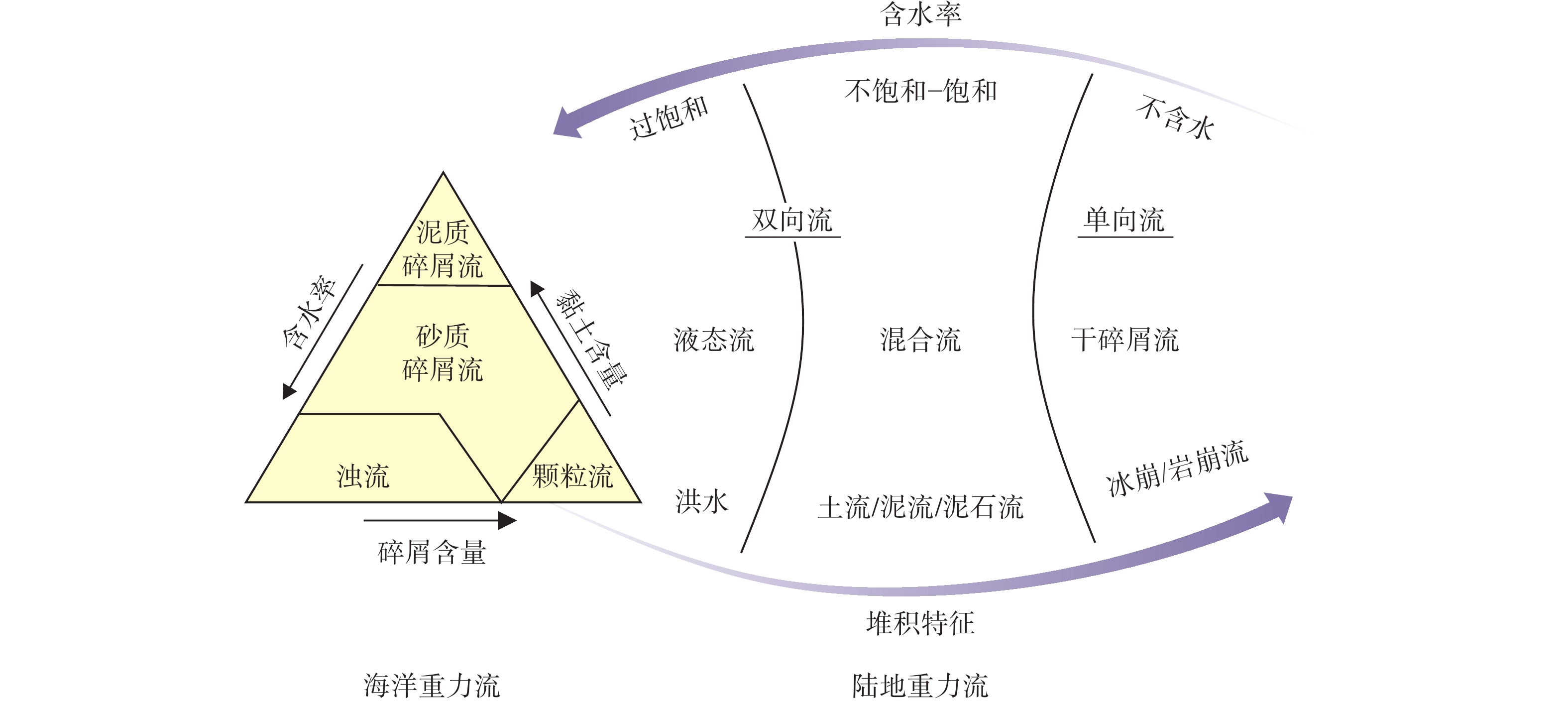
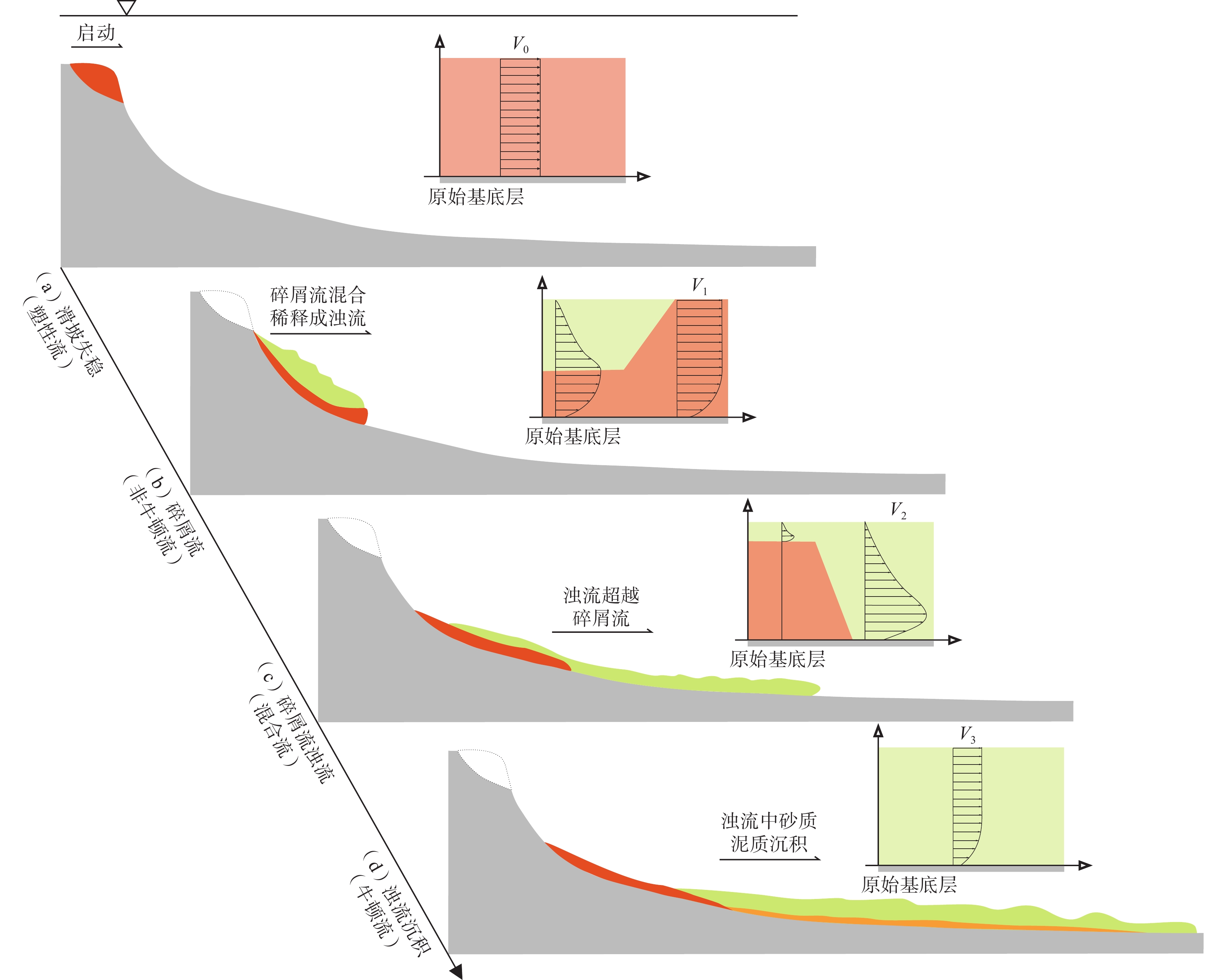
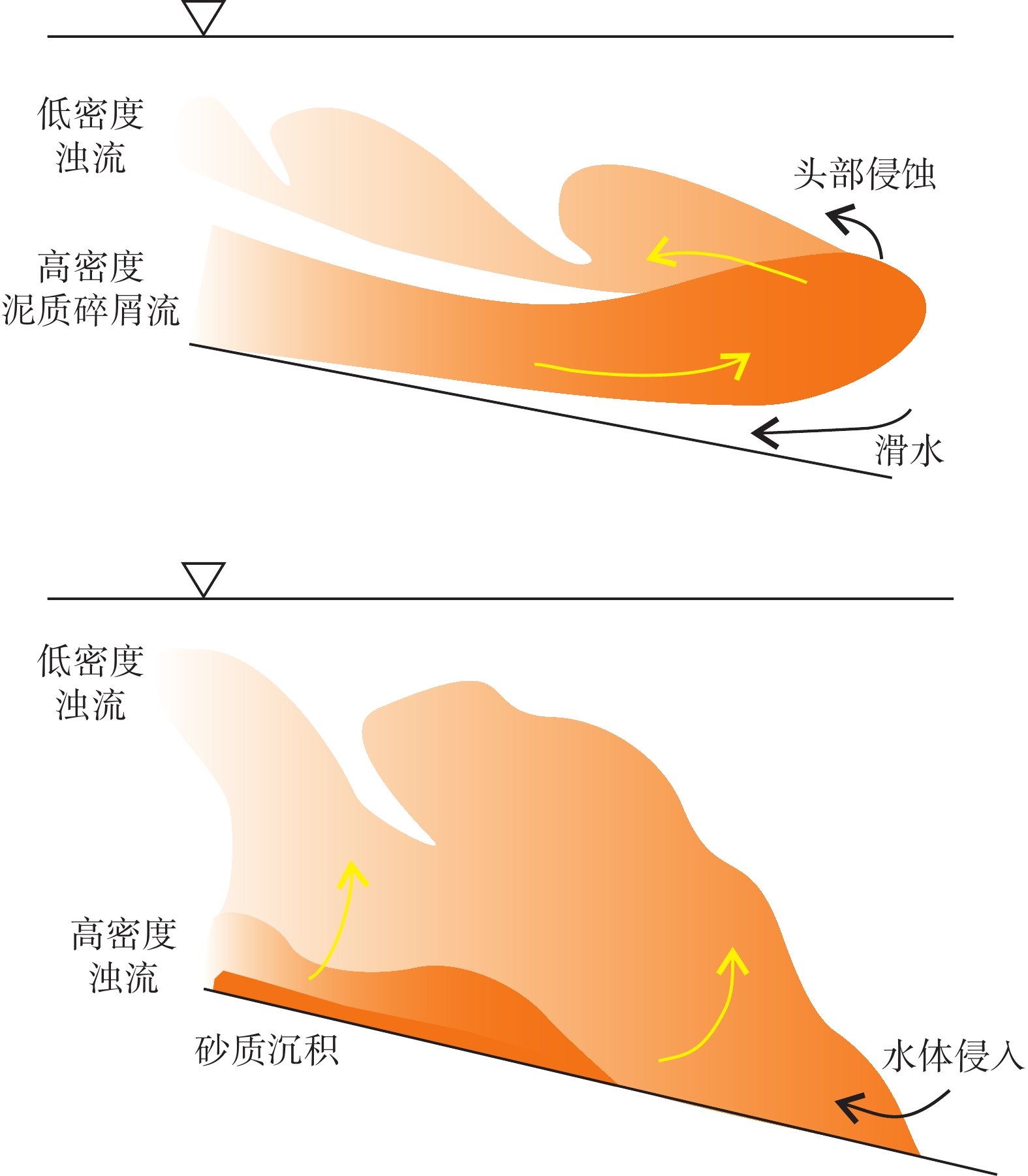
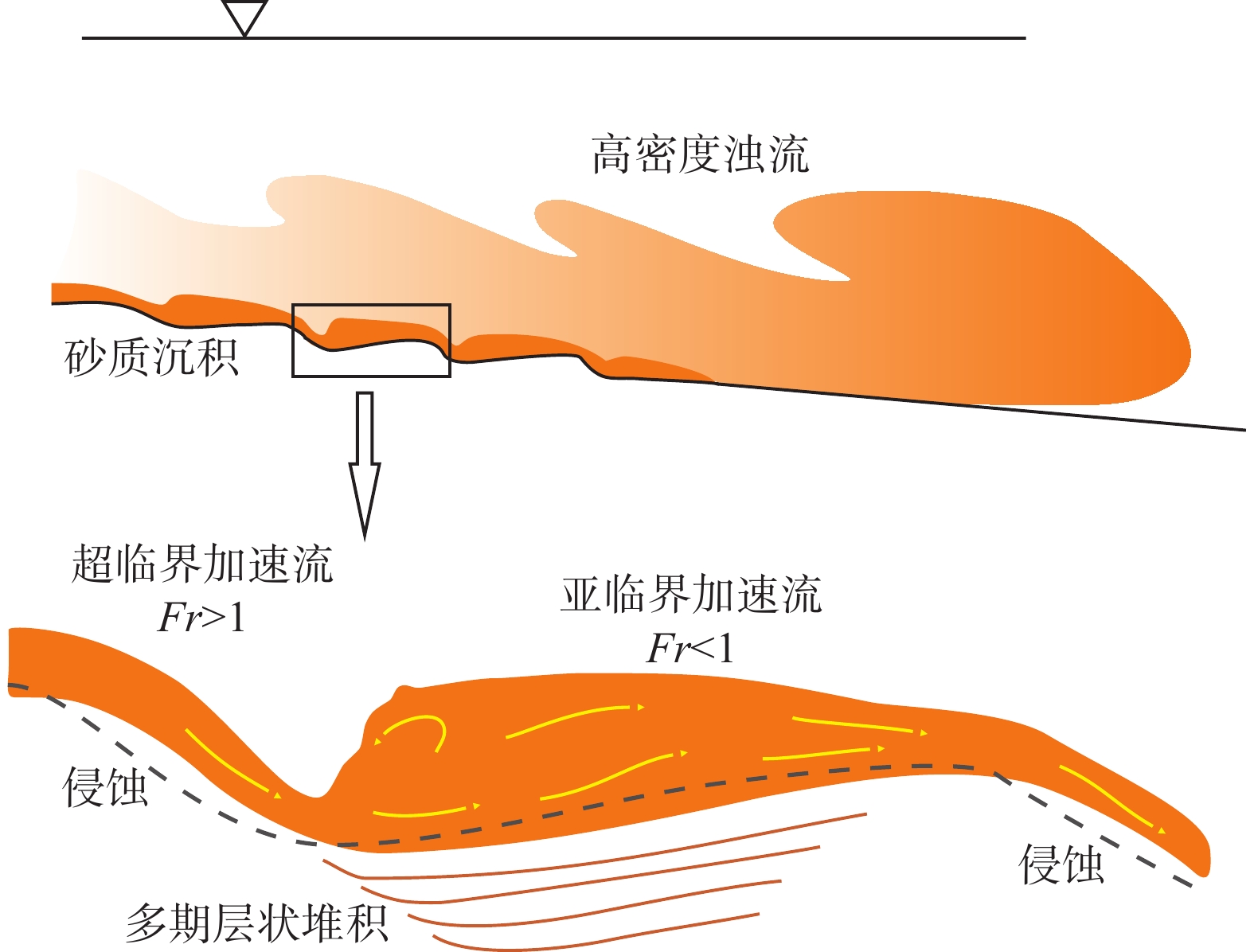
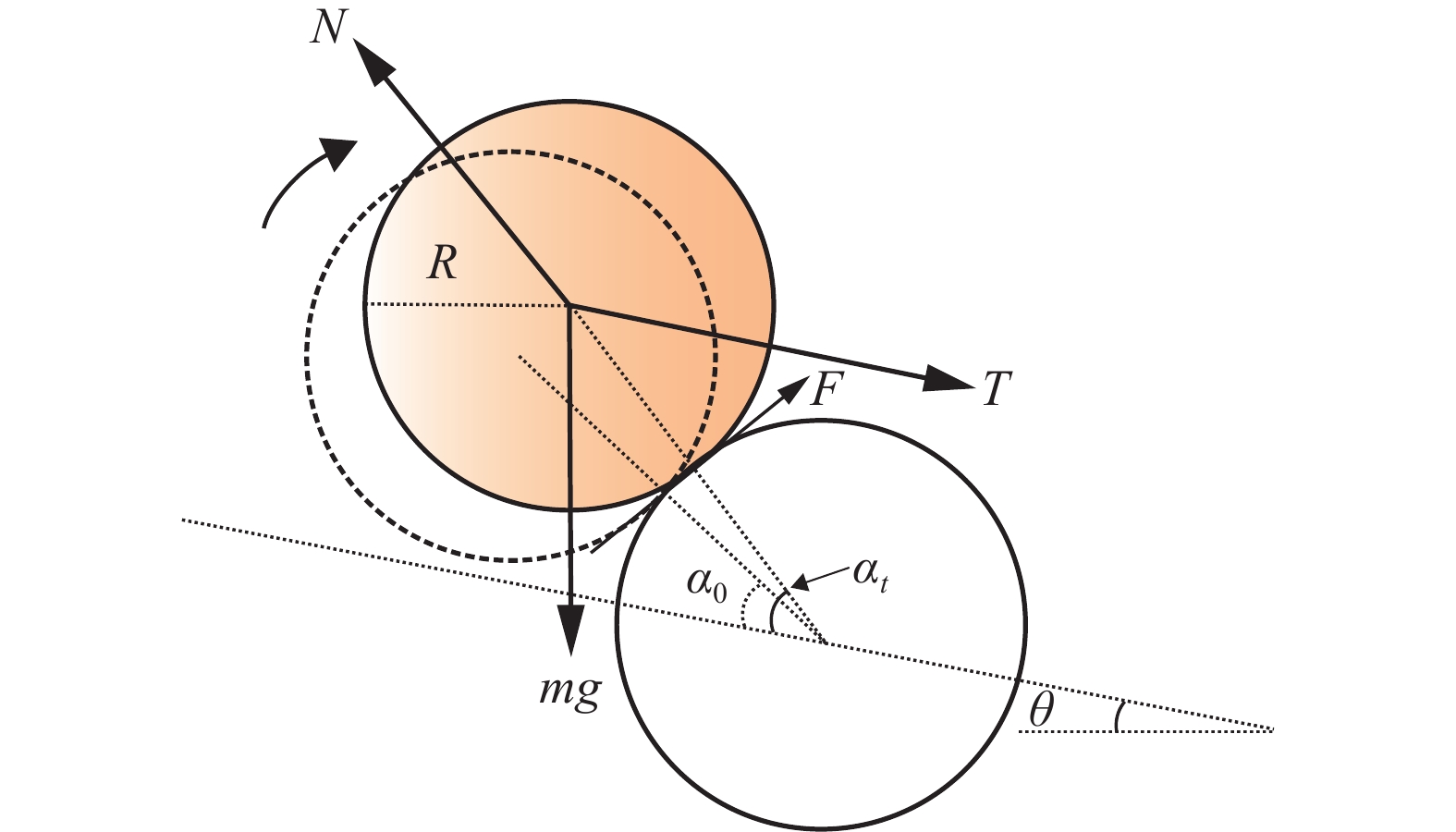
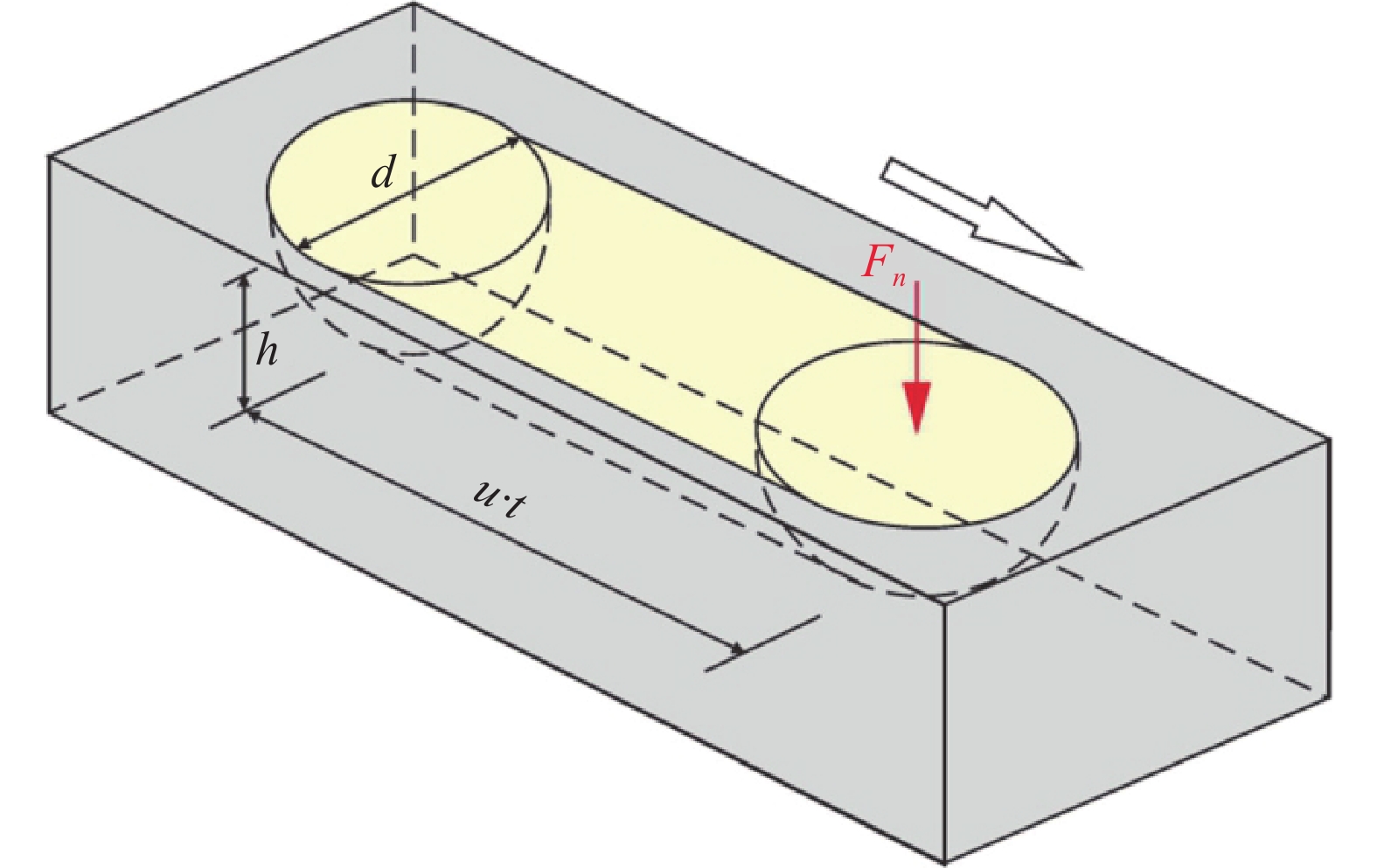
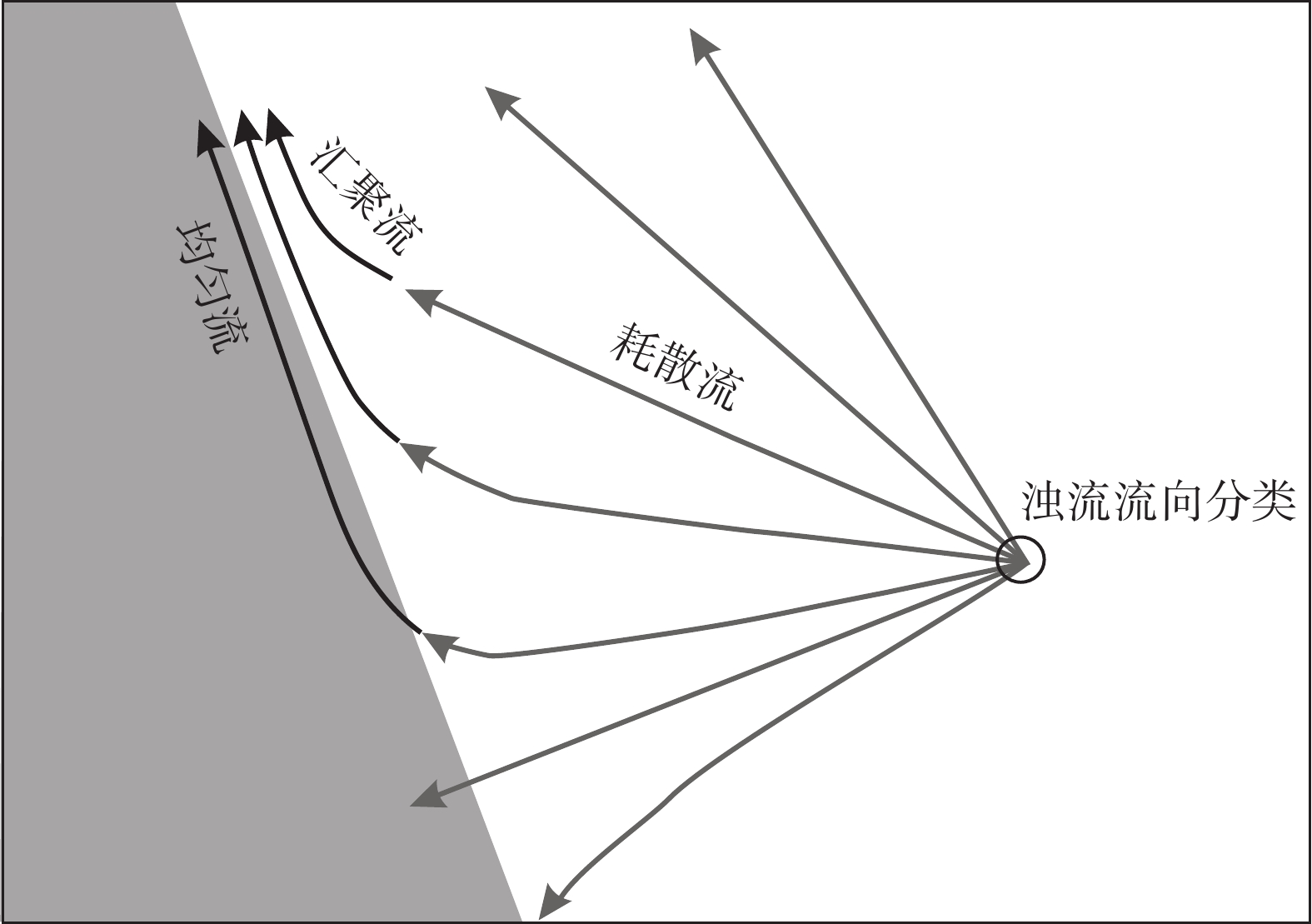
 邮件订阅
邮件订阅 RSS
RSS